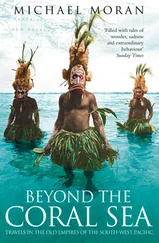After having climbed the mountain for a considerable time, we reached a small plain at the Hato del Cocollar. This is a solitary farm, situated on a table-land 408 toises high. We rested three days in this retreat, where we were treated with great kindness by the proprietor, Don Mathias Yturburi, a native of Biscay, who had accompanied us from the port of Cumana. We there found milk, excellent meat from the richness of the pasture, and above all, a delightful climate. During the day the centigrade thermometer did not rise above 22 or 23 degrees; a little before sunset it fell to 19, and at night it scarcely kept up to 14 degrees.* (* 11.2 degrees Reaum.) The nightly temperature was consequently seven degrees colder than that of the coasts, which is a fresh proof of an extremely rapid decrement of heat, the table-land of Cocollar being less elevated than the site of the town of Caracas.
As far as the eye could reach, we perceived, from this elevated point, only naked savannahs. Small tufts of scattered trees rise in the ravines; and notwithstanding the apparent uniformity of vegetation, great numbers of curious plants* are found here. (* Cassia acuta, Andromeda rigida, Casearia hypericifolia, Myrtus longifolia, Buettneria salicifolia, Glycine picta, G. pratensis, G. gibba, Oxalis umbrosa, Malpighia caripensis, Cephaelis salicifolia, Stylosanthes angustifolia, Salvia pseudococcinea, Eryngium foetidum. We found a second time this last plant, but at a considerable height, in the great forests of bark trees surrounding the town of Loxa, in the centre of the Cordilleras.) We shall only speak of a superb lobelia* with purple flowers (* Lobelia spectabilis.); the Brownea coccinea, which is upwards of a hundred feet high; and above all; the pejoa, celebrated in the country on account of the delightful and aromatic perfume emitted by its leaves when rubbed between the fingers.* (* It is the Gualtheria odorata. The pejoa is found round the lake of Cocollar, which gives birth to the great river Guarapiche. We met with the same shrub at the Cuchilla de Guanaguana. It is a subalpine plant, which forms at the Silla de Caracas a zone much higher than in the province of Cumana. The leaves of the pejoa have even a more agreeable smell than those of the Myrtus pimenta, but they yield no perfume when rubbed a few hours after their separation from the tree.) But the great charms of this solitary place were the beauty and serenity of the nights. The proprietor of the farm, who spent his evenings with us, seemed to enjoy the astonishment produced on Europeans newly transplanted to the tropics, by that vernal freshness of the air which is felt on the mountains after sunset. In those distant regions, where men yet feel the full value of the gifts of nature, a land-holder boasts of the water of his spring, the absence of noxious insects, the salutary breeze that blows round his hill, as we in Europe descant on the conveniences of our dwellings, and the picturesque effect of our plantations.
Our host had visited the new world with an expedition which was to form establishments for felling wood for the Spanish navy on the shores of the gulf of Paria. In the vast forests of mahogany, cedar, and brazil-wood, which border the Caribbean Sea, it was proposed to select the trunks of the largest trees, giving them in a rough way the shape adapted to the building of ships, and sending them every year to the dockyard near Cadiz. White men, unaccustomed to the climate, could not support the fatigue of labour, the heat, and the effect of the noxious air exhaled by the forests. The same winds which are loaded with the perfume of flowers, leaves, and woods, infuse also, as we may say, the germs of dissolution into the vital organs. Destructive fevers carried off not only the ship-carpenters, but the persons who had the management of the establishment; and this bay, which the early Spaniards named Golfo Triste (Melancholy Bay), on account of the gloomy and wild aspect of its coasts, became the grave of European seamen. Our host had the rare good fortune to escape these dangers. After having witnessed the death of a great number of his friends, he withdrew from the coast to the mountains of Cocollar.
Nothing can be compared to the majestic tranquillity which the aspect of the firmament presents in this solitary region. When tracing with the eye, at night-fall, the meadows which bounded the horizon—the plain covered with verdure and gently undulated, we thought we beheld from afar, as in the deserts of the Orinoco, the surface of the ocean supporting the starry vault of Heaven. The tree under which we were seated, the luminous insects flying in the air, the constellations which shone in the south; every object seemed to tell us how far we were from our native land. If amidst this exotic nature we heard from the depth of the valley the tinkling of a bell, or the lowing of herds, the remembrance of our country was awakened suddenly. The sounds were like distant voices resounding from beyond the ocean, and with magical power transporting us from one hemisphere to the other. Strange mobility of the imagination of man, eternal source of our enjoyments and our pains!
We began in the cool of the morning to climb the Turimiquiri. This is the name given to the summit of the Cocollar, which, with the Brigantine, forms one single mass of mountain, formerly called by the natives the Sierra de los Tageres. We travelled along a part of the road on horses, which roam about these savannahs; but some of them are used to the saddle. Though their appearance is very heavy, they pass lightly over the most slippery turf. We first stopped at a spring issuing, not from the calcareous rock, but from a layer of quartzose sandstone. The temperature was 21 degrees, consequently 1.5 degrees less than the spring of Quetepe; and the difference of the level is nearly 220 toises. Wherever the sandstone appears above ground the soil is level, and constitutes as it were small platforms, succeeding each other like steps. To the height of 700 toises, and even beyond, this mountain, like those in its vicinity, is covered only with gramineous plants.* (* The most abundant species are the paspalus; the Andropogon fastigiatum, which forms the genus Diectomis of M. Palissot de Beauvais; and the Panicum olyroides.) The absence of trees is attributed at Cumana to the great elevation of the ground; but a slight reflection on the distribution of plants in the Cordilleras of the torrid zone will lead us to conceive that the summits of New Andalusia are very far from reaching the superior limit of the trees, which in this latitude is at least 1800 toises of absolute height. The smooth turf of the Cocollar begins to appear at 350 toises above the level of the sea, and the traveller may contrive to walk upon this turf till he reaches a thousand toises in height. Farther on, beyond this band covered with gramineous plants, we found, amidst peaks almost inaccessible to man, a small forest of cedrela, javillo,* (* Huras crepitans, of the family of the euphorbias. The growth of its trunk is so enormous, that M. Bonpland measured vats of javillo wood, 14 feet long and 8 wide. These vats, made from one log of wood, are employed to keep the guarapo, or juice of the sugar-cane, and the molasses. The seeds of javillo are a very active poison, and the milk that issues from the petioles, when broken, frequently produced inflammation in our eyes, if by chance the least quantity penetrated under the eyelids.) and mahogany. These local circumstances induce me to think that the mountainous savannahs of the Cocollar and Turimiquiri owe their existence only to the destructive custom practised by the natives of setting fire to the woods when they want to convert the soil into pasturage. Where, during the lapse of three centuries, grasses and alpine plants have covered the soil with a thick carpet, the seeds of trees can no longer germinate and fix themselves in the earth, though birds and winds convey them continually from the distant forests into the savannahs.
Читать дальше












